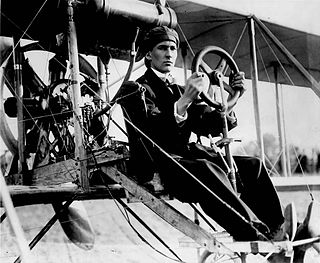
The Aerial Experiment Association (AEA) was a Canadian-American aeronautical research group formed on 30 September 1907, under the leadership of Dr. Alexander Graham Bell.

A triplane is a fixed-wing aircraft equipped with three vertically stacked wing planes. Tailplanes and canard foreplanes are not normally included in this count, although they occasionally are.

Ignaz "Igo" Etrich was an Austrian flight pioneer, pilot and fixed-wing aircraft developer.

The Roe I Triplane was an early aircraft designed and built by A.V. Roe which was the first all-British aircraft to fly..

The Wright Model C "Speed Scout" was an early military aircraft produced in the United States and which first flew in 1912. It was a development of the Model B but was specifically designed to offer the Aeronautical Division, U.S. Signal Corps a long-range scouting aircraft.

The Farman III, also known as the Henry Farman 1909 biplane, was an early French aircraft designed and built by Henry Farman in 1909. Its design was widely imitated, so much so that aircraft of similar layout were generally referred to as being of the "Farman" type.

The Short S.27 and its derivative, the Short Improved S.27, were a series of early British aircraft built by Short Brothers. They were used by the Admiralty and Naval Wing of the Royal Flying Corps for training the Royal Navy's first pilots as well as for early naval aviation experiments. An Improved S.27 was used by C.R. Samson to make the first successful take-off from a moving ship on 9 May 1912.

The Rex Smith Biplane was a pioneering biplane based mostly on designs of Glen Curtiss. It was built and demonstrated at College Park, Maryland, at the same airfield that the Wright Brothers trained pilots using their aircraft for the U.S. Army Signal Corps just north of Washington, D.C. This followed the initial demonstration at Fort Myer, Virginia, in 1908 and 1909, when the U.S. Army Signal Corps accepted the Wright Flyer in July 1909. Both the Wright Brothers and Curtiss continued to demonstrate their aircraft at the College Park Airport.
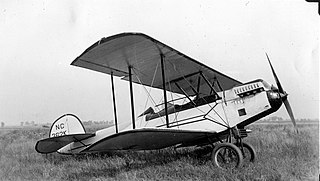
The Parks P-1 was an American three-seat sport biplane that was built in the late 1920s.
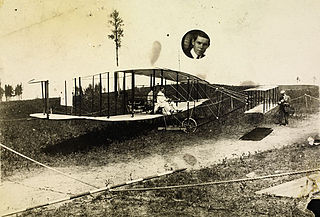
The Canadian Aerodrome Baddeck No. 1 and Baddeck No. 2 were early aircraft designed by John McCurdy and Frederick W. "Casey" Baldwin, under the guidance of Alexander Graham Bell for the Canadian Aerodrome Company. The Baddeck No. 1 was the first aircraft designed and built in Canada. The aircraft were constructed at Bell's laboratory at Beinn Bhreagh, Baddeck, Nova Scotia using local labour. After being constructed in Baddeck, the Baddeck No. 1 was shipped to Petawawa, Ontario where it made its first flight on 11 August 1909.

The Bland Mayfly was an early aircraft constructed in 1910 by Lilian E. Bland in Carnmoney in Ireland. It is credited as the first aeroplane to be designed and constructed by a woman.

The pioneer era of aviation was the period of aviation history between the first successful powered flight, generally accepted to have been made by the Wright Brothers on 17 December 1903, and the outbreak of the First World War in August 1914.
The Aeronautical Syndicate Limited (ASL) was one of the earliest aeroplane manufacturers. A British company, it was founded in 1909 by the investor Horatio Barber and engineers William Oke Manning and Howard T. Wright. Initially located in Battersea, London, the business soon relocated to Larkhill on Salisbury Plain. It later moved to the Aeronautical Syndicate Flying School, Hendon. The company closed in 1912.

William Greene was an early aviation pioneer who was one of the first American pilots and airplane constructor. He developed a passion for flying at an early age and was an active member and treasurer of the Aeronautical Society of New York. In 1909 he designed, constructed and piloted a biplane at the Morris Park Raceway, Bronx, NY. He later formed an aircraft manufacturing company in Rochester, NY
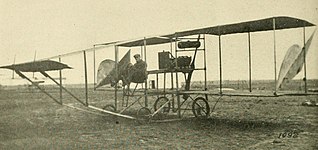
The Boland 1911 Tailless Biplane was an American pioneering aircraft.

The Boland V-8 was an aircraft engine that was developed by the Boland Brothers for use in their tailless aircraft. Between 1908 and 1914, four versions of this motor were produced ranging in power from 60 hp (45 kW) to 125 hp (93 kW). The Boland motors all used an unusual concentric overhead valve. This arrangement positioned the intake valve in the middle of the exhaust valve. These were actuated by a single push rod and rocker arm.

In early 1910, Dr. William Greene designed, built and sold the successor to his own 1909 biplane in Mineola, Long Island at the Aeronautic Society's facility. This aircraft was a fairly conventional biplane in the Farman style. By mid April 1910, Greene had left New York City and moved to Rochester, NY to start a company to produce aircraft of his own design.

The Boland 1911 Conventional Biplane was an American pioneering aircraft.

The Boland 1912 Tailless Biplane was a refinement of the Boland 1911 Tailless Biplane. The major change in the 1912 biplane is the addition of a central nacelle that contained the pilot, passenger and the engine.
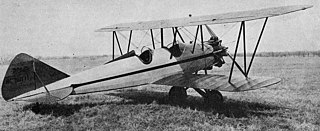
The Rearwin Ken-Royce was an American three-seat sport/touring biplane built by Rearwin Airplanes first in Salina, Kansas then Kansas City. It was the first airplane built by the company.



















